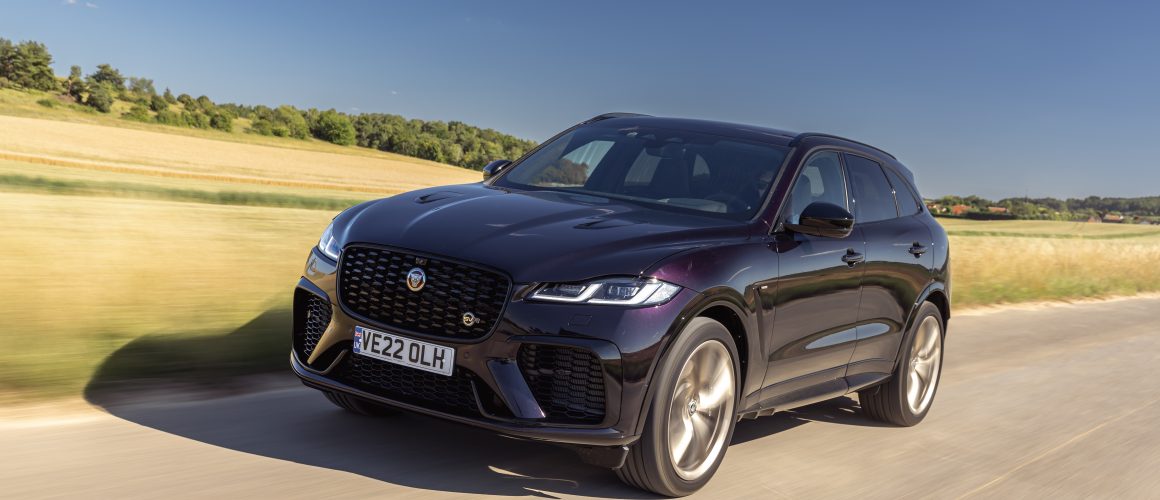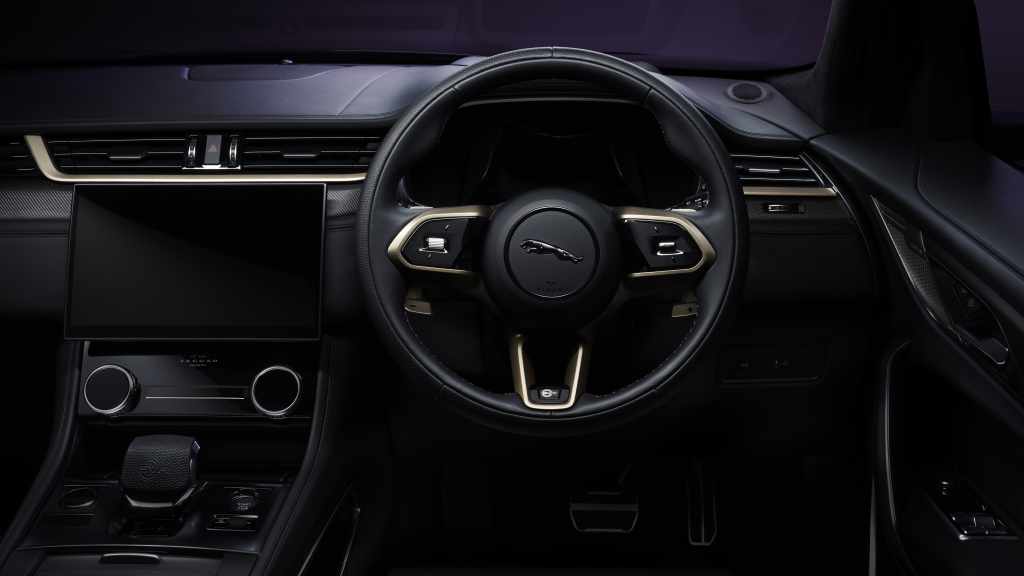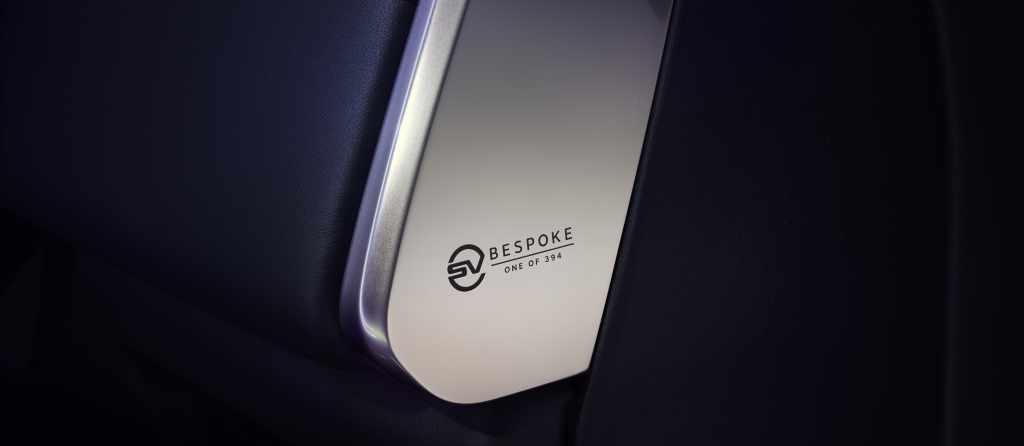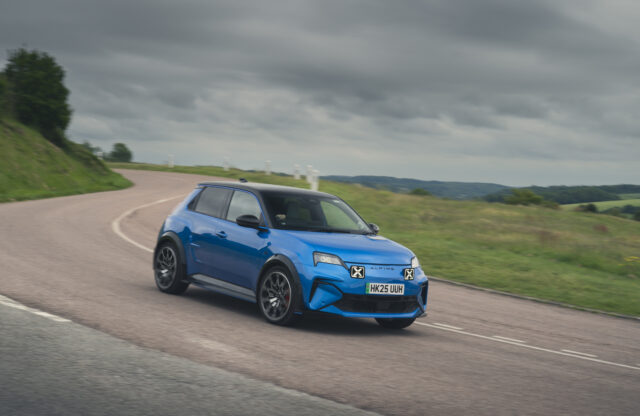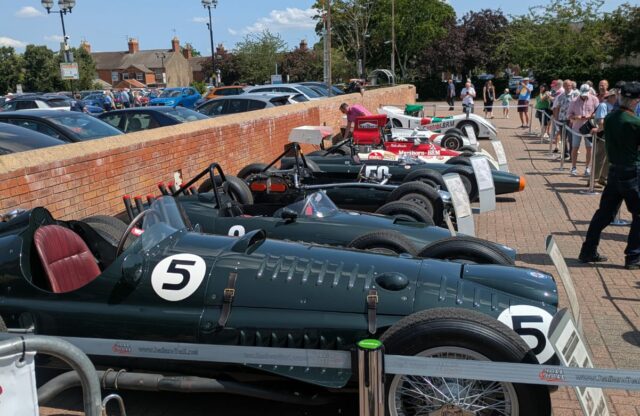WORDS: ELLIOTT HUGHES | PHOTOGRAPHY: STEVEN TURNER/JAGUAR
At some point in the recent past, an ostensibly baffling conversation must have taken place at Jaguar’s Coventry headquarters. It would have gone something like this: “Let’s commemorate the XJR-9’s victory at the 1988 Le Mans 24 Hours with a special-edition version of the F-Pace SUV.”
“Go on…” might have been the response, Jaguar executives inquisitively leaning forward over the boardroom table. “It will be called the SVR Edition 1988, and painted purple with gold wheels to tie it in with the XJR-9’s Silk Cut livery. We will build just 394 of them – one for every lap of the race.”
And it seems that enough heads nodded in agreement.

At this point, you’re probably bubbling with a cocktail of cynicism and dismay. “What could a two-tonne SUV possibly have in common with a fire-spitting Group C racing car?” you’re probably thinking. “Really? Purple with gold wheels?” That, too, is a valid concern.
The upper echelons of Jaguar management clearly didn’t share your reservations, because the plan was swiftly put into action and the F-Pace SVR Edition 1988 was given the green light.
Consequently, I find myself grasping the keys to this very model on a summer’s morning outside the Nobu Hotel in London. I will be part-retracing the wheel-tracks of past Jaguar legends Norman Dewis and Bob Berry with a drive to the Continent.
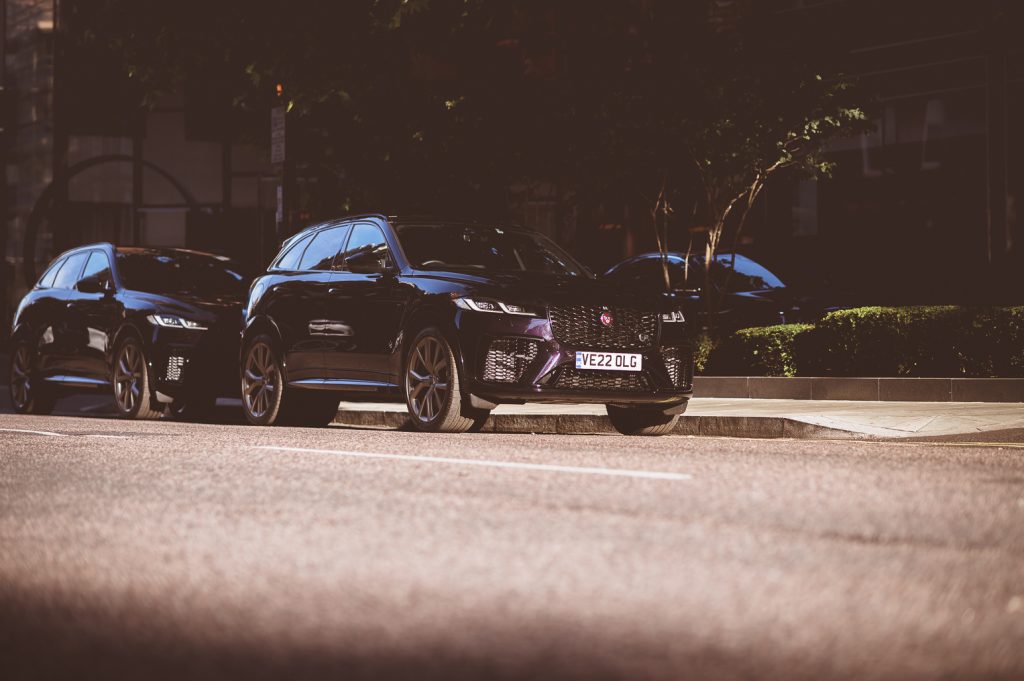
Unlike Berry and Dewis, our destination isn’t the Geneva Motor Show. Instead, our group will be driving to the Champagne region of northwestern France, with photo opportunities along the way at the mythical pitlane of the disused Reims Circuit – the site of many past Jaguar triumphs.
My first impression of the car is that the purple Midnight Amethyst paintwork and Champagne Gold wheel combo is nowhere near as lurid in the metal as you would expect. The paint is a deliciously deep hue that reveals flashes of purple in direct sunlight. The satin-finished 22-inch wheels look as crisp as the beverage they are named after.
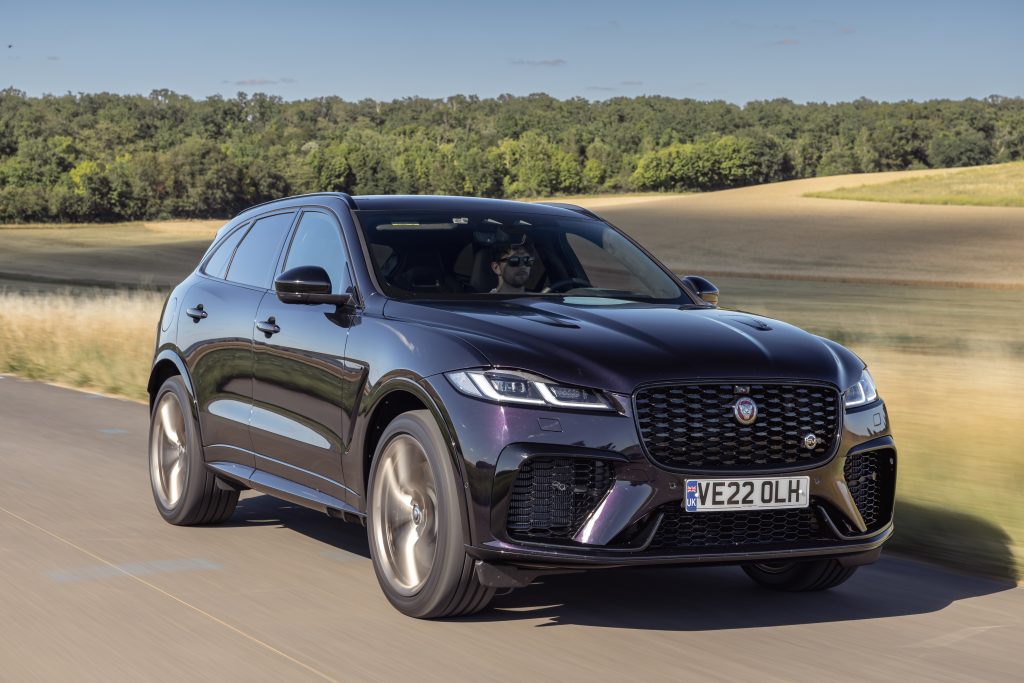
Upon opening the door, I’m greeted by a plush leather cabin finished with Champagne Gold detailing. Laser-etched SV Bespoke and Edition 1988 branding is paired with subtle numerical plaques inside the door jams that add to the specialness. It looks brilliant!
Now it’s time to climb inside and get comfortable for the long drive ahead. The semi-bucket seats are heavily bolstered and hint at this super-SUV’s sporting pretensions. I squeeze the brake and give the Engine Start button a purposeful jab into the dashboard. The SVR’s savage 542bhp 5.0-litre supercharged V8 awakens from its slumber with an indignant growl.
Sat-navs primed, our envoy of British SUVs makes a break for the Eurotunnel as we head for Reims. Once on the move, the intervening miles reveal the impressive scope of the SVR’s abilities.
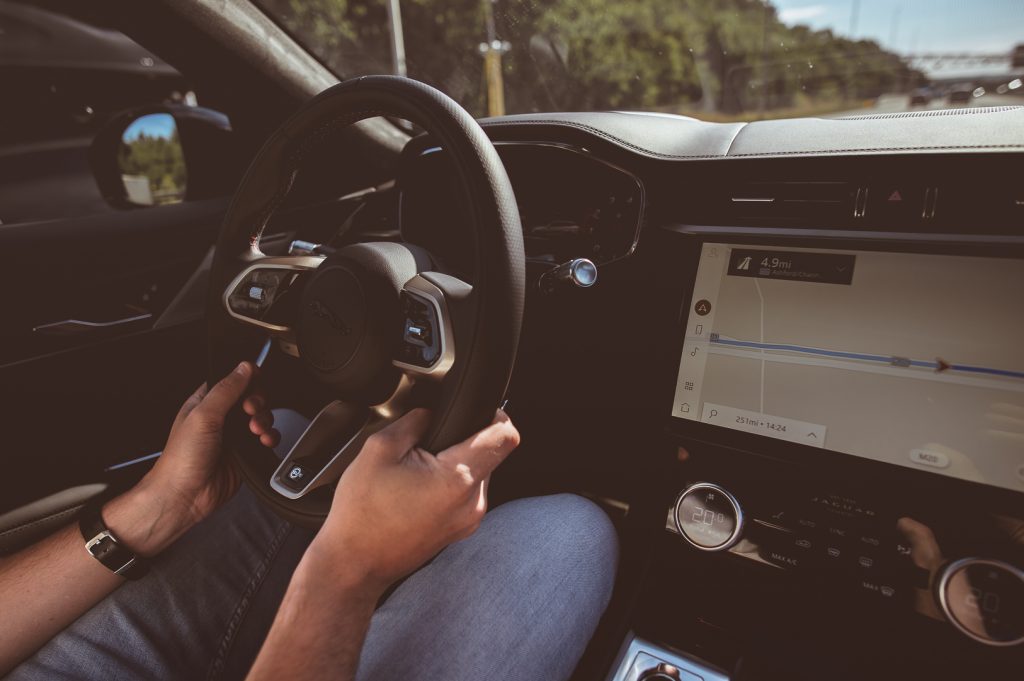
With steering, damping and powertrain settings wound back to Comfort mode and the exhaust valves closed, the SVR makes for an impressive motorway cruiser that vociferously sucks up the miles while cossetting occupants with its plush cabin and excellent sound system. The useful head-up display and radar-guided cruise control make for serene progress.
Soon enough, with an extra 280 miles on the odometer, I arrive at the evocative remains of Reims Circuit for an opportunity to stretch the legs and explore the old pitlane and grandstands.
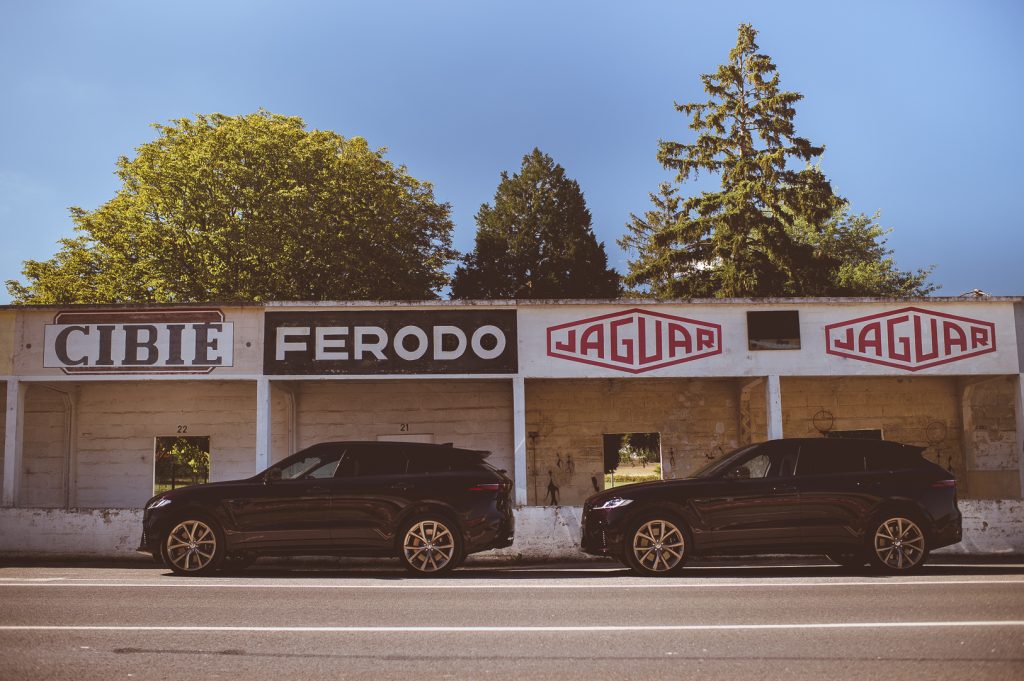
The scalding metal of the exhaust system ticks as the car cools, aptly positioned beneath the hexagonal Jaguar emblems adorning the frontage of the pit buildings. I feel remarkably fresh despite having spent several hours in the car’s body-hugging seats – despite initial concerns that this wouldn’t be the case.
With scores of photographs taken, our group pauses to ruminate over Jaguar’s three victories at the arduous Reims 12 Hours in 1953, ’54 and ’56. Such successes built the foundations of the marque’s endurance-racing success that culminated in 1988 with the XJR-9.
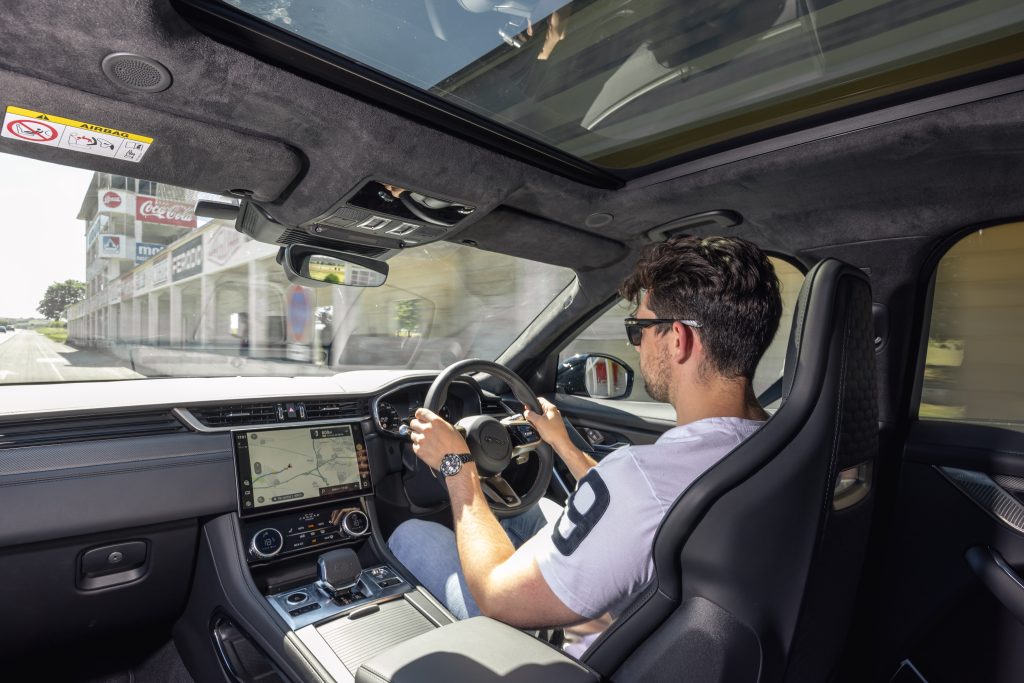
The fearsomely fast and narrow triangular circuit held its first event, the Grand Prix de la Marne, in 1926 – a precursor to Formula 1. Racing took place at Reims throughout the pre-war period, and Bugatti largely dominated proceedings by racking up nine Grand Prix de la Marne victories before hostilities broke out. Racing resumed in 1947.
Jaguar’s sports car successes at the track started in 1952 with Stirling Moss and TH Wisdom taking victory at the final Grand Prix de la Marne in a XK120C. The Ecurie Ecosse XK120 of James Scott Douglas joined it on the podium.
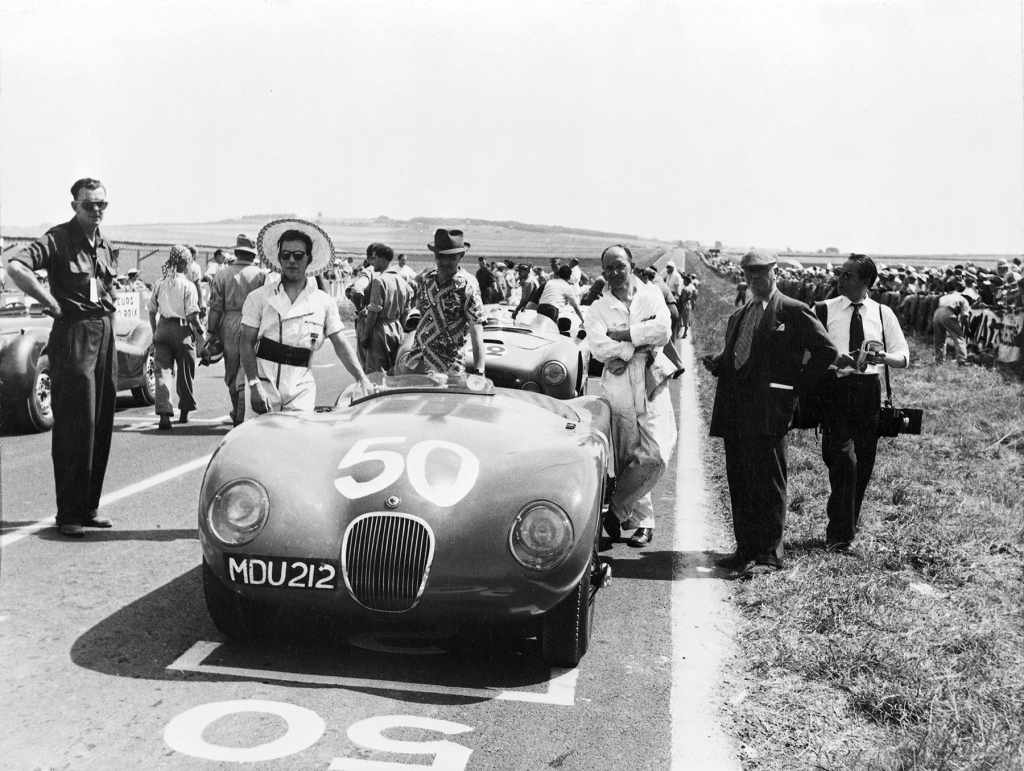
The first of the marque’s trio of Reims 12 Hours victories was delivered by Moss and Peter Whitehead in 1953 behind the wheel of the legendary C-type, before the D-type took over and claimed the next two wins in ’54 and ’56.
Reims held its final 12-hour race of attrition in 1967, before the circuit was relegated to national-level racing. It was then decommissioned entirely in 1972 because it was deemed too dangerous. Having driven around the track, I can attest that racing’s curtailment here is unsurprising; from a modern perspective, it’s difficult to imagine competing wheel-to-wheel on such a fast and narrow circuit that leaves such miniscule margins for error.
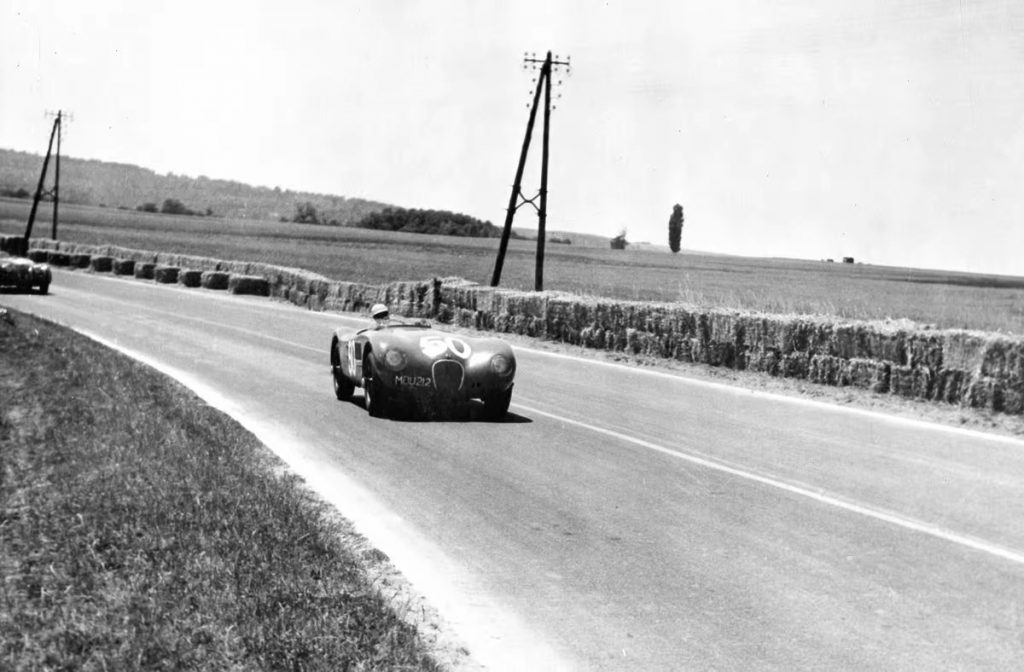
As with Jaguar’s gladiatorial race-winning drivers, our journey to Reims will also end with Champagne – albeit the destination rather than with a glug of the bottled variety. Happily, the drive to the region involves far more engaging roads than the first stint of the journey, which means I can finally begin to explore the extent of the SVR’s dynamic capabilities.
Swivel the mode switch into Race, and the dampers stiffen purposefully, the steering feels heavier and the instrument cluster is bathed with an angry red hue. Mash the aluminium accelerator pedal, and the nose pitches upwards as the car squats on its haunches and administers that 542bhp into the asphalt. The visceral acceleration is supercar quick; 0-62mph is dealt with in a mere 3.8 seconds.
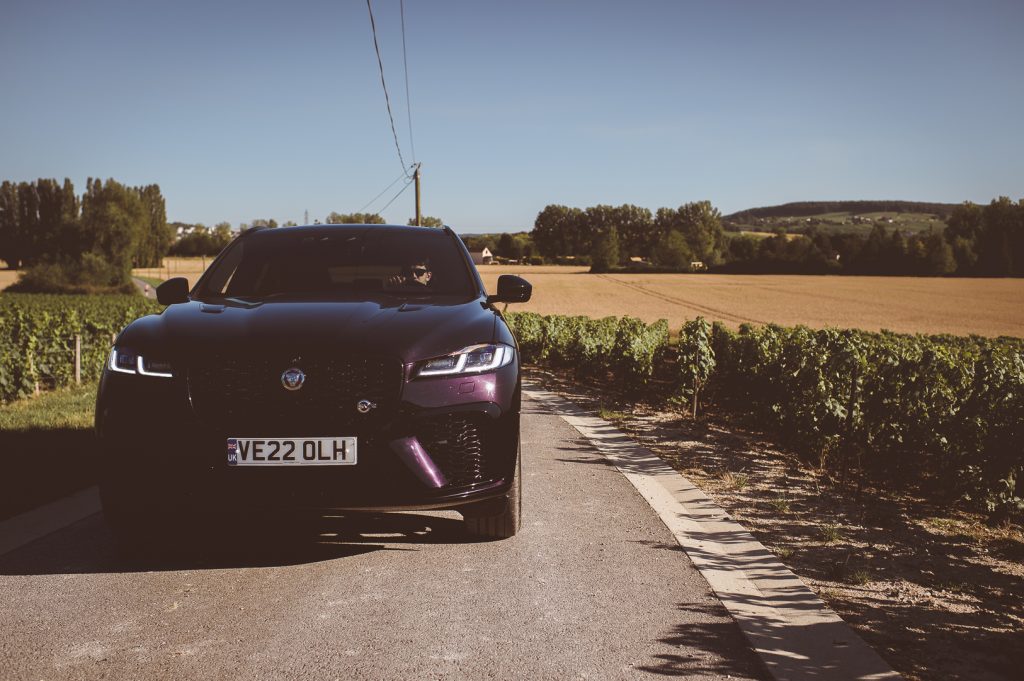
Flick the satin-gold gearshift paddle and the next ratio engages with rapid ferocity as that burly 5.0-litre V8 reaches its raucous red line. It’s all very fire and brimstone – particularly with the exhaust valves open.
Predictably, the next bend arrives with alarming immediacy. The brakes are mercifully effective for a car so heavy. The steering feels accurate as I wind on the lock, and the Jaguar hides its heft admirably as it’s sent into each sweeping bend. It’s only when pushing hard in slower corners that SVR’s weight and high centre of gravity becomes more obvious.
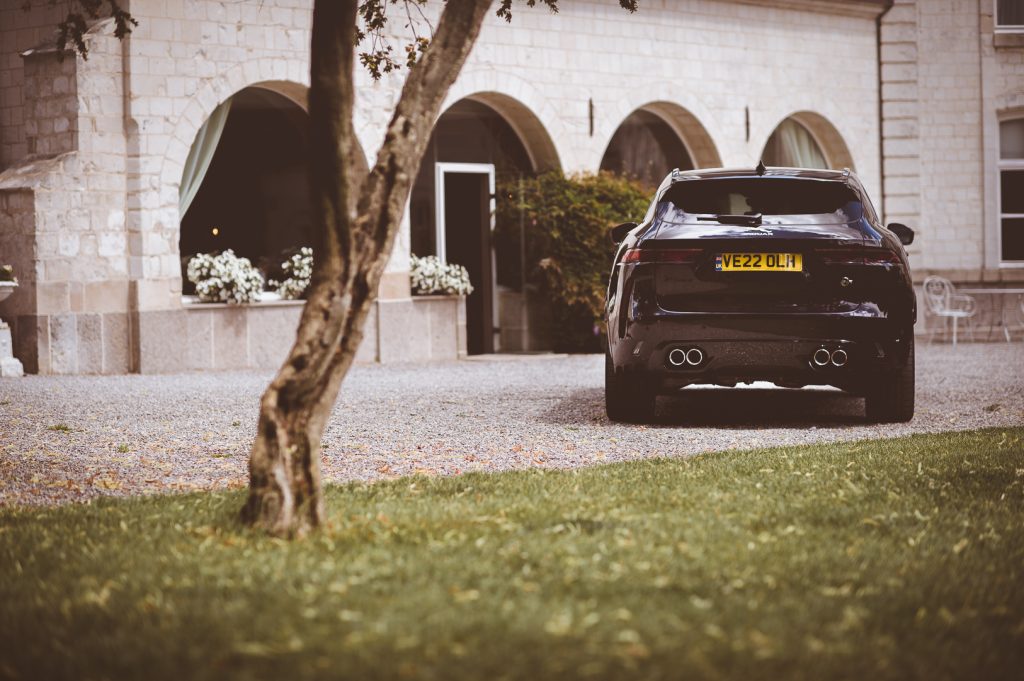
Having arrived at our hotel for the night, I have time to reflect on whether the Edition 1988 merits its allusion to Jaguar’s great motor sport past and considerable £23,955 premium over a mechanically identical car in SVR trim. Admittedly, the gap to a standard SVR is less if specced to similar levels as the special edition. In total, the Edition 1988 will set you back £101,550.
The Edition 1988 would be easier to endorse had Jaguar fettled some extra performance to go with the Le Mans nostalgia and the hike in list price. On the other hand, I haven’t once wished for more from a performance perspective, and the car remains one of the most potent and underrated performance SUVs money can buy. There is no doubt that Jaguar will sell every one of those 394 special editions.
So, was the Big Cat’s decision to make such a car as baffling as it might first appear? Perhaps not, the F-Pace having been the marque’s biggest seller for several years now. As much as the F-type might have been a more natural fit, we’re simply glad that you can buy a 5.0-litre supercharged V8 with some magical motor sport nostalgia sprinkled in.

